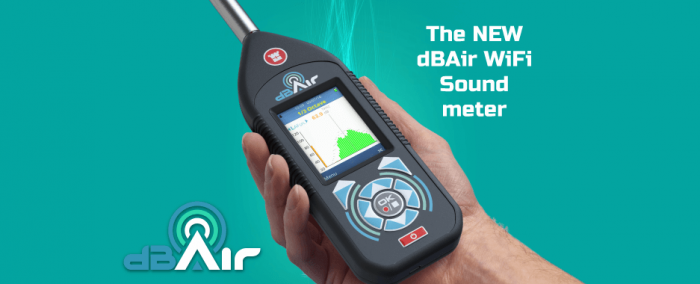How do Environmental Noise Monitors work?
Environmental Noise Monitors, such as the Castle dBAir 8 Day Noise Monitor, are measurement instruments designed to record noise levels and audio events, generally outdoors at the perimeter of sites.
These type of noise monitors are generally used to help you with assessments to BS 4142, site noise survey reports and local authority complaint measurements. Readings are taken in line with each application specific requirements, or when using meters such as the Castle dBAir Environmental Sound Meter users can apply one of the preset measurement templates to ensure the correct readings are taken.

Castle’s dBAir Environmental Noise Monitors
The main applications for Environmental Noise Monitors are:
BS 4142 Noise Assessments
BS 4142 outlines the methods for rating and assessing sound from a number of situations.
The new version of BS 4142, published in 2014, has a number of new specific requirements for instrumentation. The sound meter and calibrator must be at least of Class 1 standard, and the environmental conditions at the point of monitoring must also be considered. See the BS4142 Noise Assessment System.
Boundary Noise Assessments
Whilst some site boundary monitoring is required to be permanent, there are a raft of situations that require boundary assessments for shorter periods of time. The most popular of these are often made up of a tripod which houses a weatherproof microphone shielding, and a locked weatherproof case for the instrumentation. See the dBAir Boundary Noise Assessment System.
Construction Noise Assessments
Construction noise is a specialist application because it covers a range of tasks of Planning Conditions to BS 5228 Assessments and from Complaints and Occupational Noise Measurements. See the dBAir Construction Noise Assessment System.
Tonal Noise Assessments to 1/3 Octaves
Noise is often much more complex than the human ear can detect, but one such area that’s often perceived with annoyance is tonal noise. Tonal noise is noise at one particular frequency, and causes greater annoyance than a more evenly balanced noise wave.
Being able to take readings with 1/3 octave band analysis, by using such meters as the dBAir Environmental 1/3 Octave Meter, noise sources can be found more easily. Tonal noise is generally emitted from machinery with motors and fans, with probably the most famous cases being complaints against wind farms.
Find out more about the Castle dBAir Sound Level Meter
-

Castle Products
CLICK HERE FOR
Information, technical data, images and pricing of all Castle Group Ltd. products -

Product Rental
CLICK HERE FOR
Hire the best equipment at a fraction of the purchase price -

Calibration Lab.
CLICK HERE FOR
Calibration and repair services from Air Samplers to Vibration Meters -

Training
CLICK HERE FOR
World class safety and environmental courses. On your site or our 4* training facility -

Consultancy
CLICK HERE FOR
Employ our expertise for both simple and more demanding issues.












